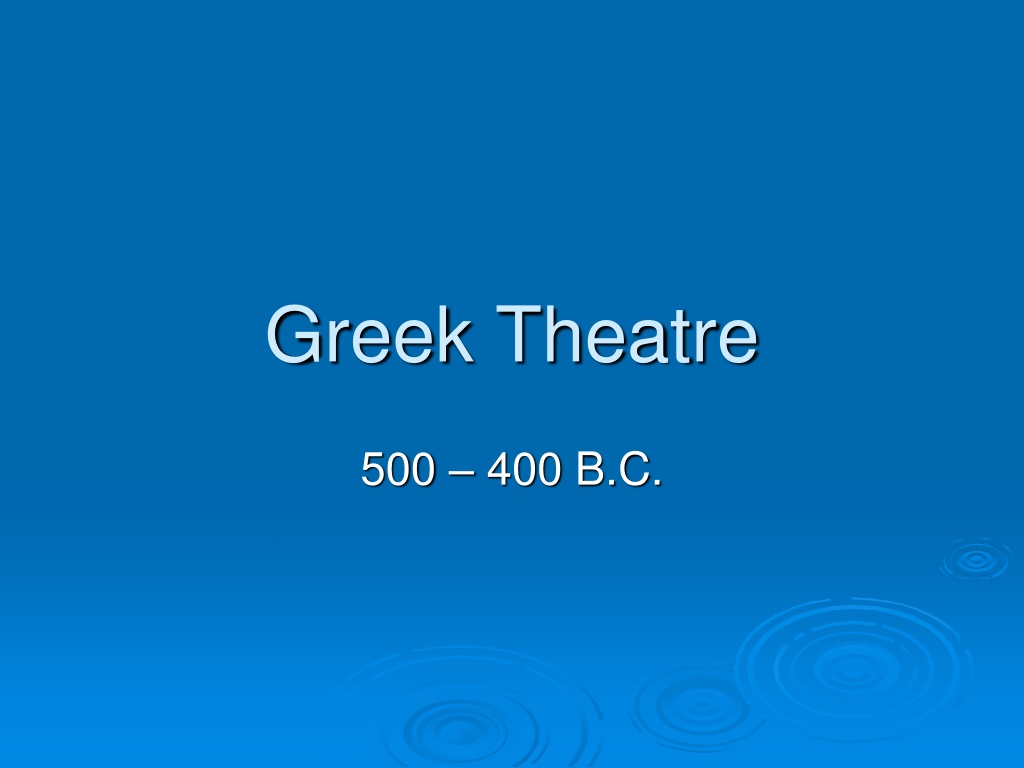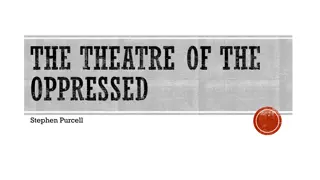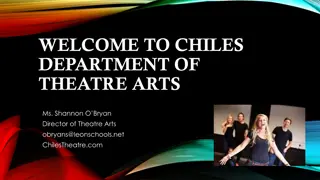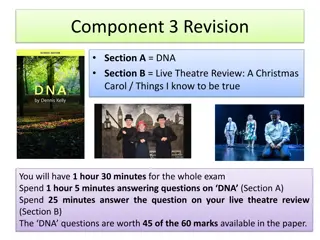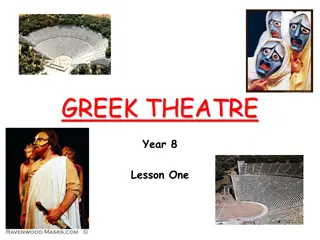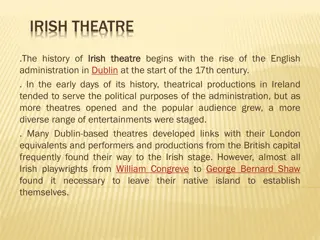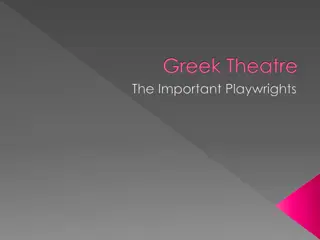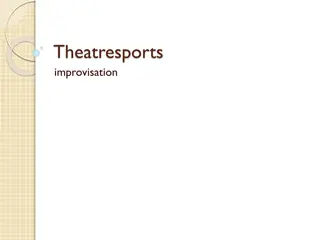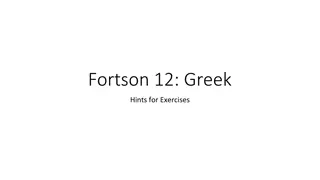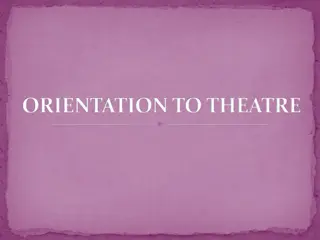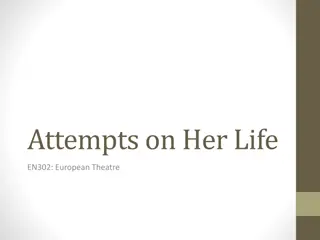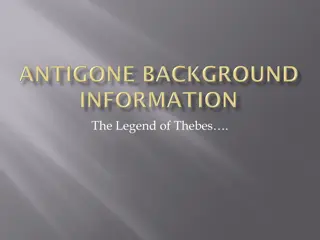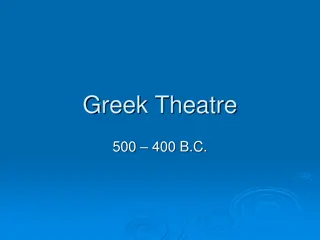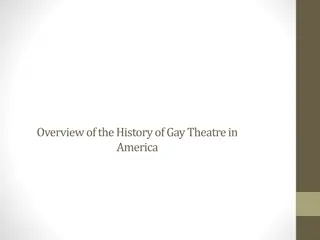Evolution of Greek Theatre: A Journey Through Time
Greek Theatre traces its roots back to 500-400 B.C. where it emerged from ritual dances and storytelling. The artform flourished during the Golden Age of Greece, producing timeless tragedies and architectural marvels. Festivals like the City Dionysia celebrated theatre as a national and religious ceremony, where men performed in plays while the audience reveled in the festivities. The structure of Greek Theatres featured outdoor performances in amphitheaters built into the landscape.
Download Presentation

Please find below an Image/Link to download the presentation.
The content on the website is provided AS IS for your information and personal use only. It may not be sold, licensed, or shared on other websites without obtaining consent from the author. Download presentation by click this link. If you encounter any issues during the download, it is possible that the publisher has removed the file from their server.
E N D
Presentation Transcript
Greek Theatre 500 400 B.C.
The Dawn of Theatre Drama A Greek word that means to do or to act. Theatre was born out of dance stories and pantomimes that told tribal traditions. Dances were performed to pacify unseen spirits. Ritual (the established form or order for a ceremony) developed. Out of this religious ritual, drama emerged!
The Golden Age of Greece The greatest tragedies of all time were written and performed. Also, outstanding achievement in architecture and government occurred.
A Festival of Theatre Greek theatre began with religious rites paying homage to the god of wine and fertility, Dionysus. Public celebrations were held. Much dancing and singing of hymns, called dithyrambs, occurred. Tragedies developed from these rituals. Tragedy means goat song in Greek.
City Dionysia Festival A festival of tragedies. Prize awarded to the best series of plays. Festival was a national and religious ceremony. Business was suspended for a week, thus, everyone participated. State paid fee if anyone could not.
Men and women attended. Only men acted in the plays, as it was the government rule. Festival lasted 5-6 days. 1stday consisted of a procession that honored Dionysus. People would drink, sing, and make merry! Theatre or theatron the seeing place in Greek.
Four plays featured: a trilogy of tragedies and one comedy for comic relief. Winner was awarded the coveted ivy garland wreath. CHORUS - group that comments on the action and helps the audience understand things they may not see.
Structure of Greek Theatres All plays performed outside. Amphitheatre the side of a mountain was scooped out into a bowl shape. Tiers of stone seats. Provided seating for up to 20,000. Acting area orchestra Skene small building where actors could change clothes
Drama was rhetorical containing more speech than action. Actors used broad gestures and volume. To be seen, they wore thick-soled shoes, called cothurnus and a high headpiece, called an onkus. They also wore masks. Masks would indicate character, and could help project the voice.
Standard Greek attire: tunic, long mantle, short cloak.
` Scenery was painted on boards and placed against the skene. Some small props were used (drums for thunder, etc.) Deus ex machina means god in the machine. It was a mechanical device used for lowering and raising gods. Term is used today for any plot device, such as the death of a rich uncle, that occurs unexpectedly to assist the main character in the convenient solution of a problem.
